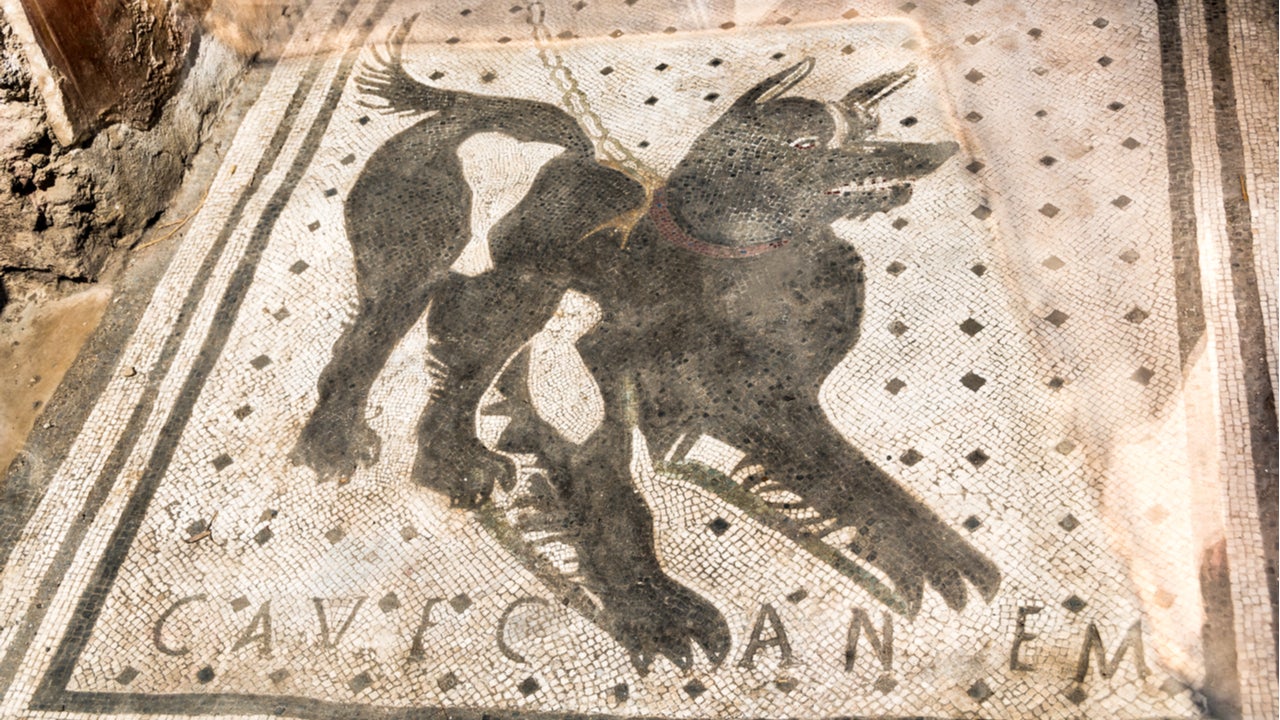There is something quite appropriate about one of the wonders of the modern world, the ruins of the Roman city of Pompeii, destroyed nearly 2000 years ago by a volcanic eruption, now embracing some of the most advanced robotics technology to help secure the unique historical site. This includes a robot dog, which has been stationed in Pompeii to collect data on structural and safety issues in the ancient ruins.
Prominent archaeological sites like Pompeii and others around the world are now routinely using technologies like robotics, artificial intelligence (AI), and LiDAR (Light Detection and Ranging) to reveal secrets that have been kept hidden for thousands of years.
Using tech to keep ancient sites secure
When Mount Vesuvius erupted in AD79, killing most of the population of the cities of Pompeii and Herculaneum, the city was frozen in time. Gradually, over the years, life in Pompeii has been revealed—from the construction of Roman roads to frescos in homes, even ‘fast-food’ stops, and wine stores.
But despite the uniqueness of the site and the stream of artifacts found in continual archaeological digs, site security and upkeep have not always been the best. Archaeologists and historians—plus local residents—have complained about the poor management and upkeep of the historic Pompeii site.
Subsequently, The United Nations Educational, Scientific and Cultural Organization (UNESCO) warned that it would put Pompeii on a list of world heritage sites in peril unless the Italian authorities took adequate steps to improve its preservation.
Pompeii and Spot the robot dog
One of the most familiar attractions at Pompeii is a mosaic of a chained dog with the Roman inscription “Cave Canem”, or “Beware the Dog.”

US Tariffs are shifting - will you react or anticipate?
Don’t let policy changes catch you off guard. Stay proactive with real-time data and expert analysis.
By GlobalDataToday’s ‘canem’ is Spot, a robot dog built by Boston Dynamics, which can navigate difficult terrains autonomously and, according to the Archaeological Park of Pompeii, is “capable of inspecting even the smallest of spaces in complete safety, gathering and recording data useful for the study and planning of interventions.”
Spot will also be tested for use in underground tunnels made by tomb raiders, who for years stole local relics to sell around the world. While more extraordinary finds are being uncovered at Pompeii, so too are the tunnels that have enabled so-called ‘culture crime’.
A key role for LiDAR
LiDAR (Light Detection and Ranging) has become one of the main tools transforming archaeology. Deployed from the air, typically on helicopters or drones, it can provide 3D imagery of ruins, even those deeply buried in nature. LiDAR’s accuracy in detecting hidden features has helped uncover settlements in Central America and South-East Asia. Thanks to this technology, entire Mayan and Khmer settlements have emerged from beneath the tropical canopy.
One of the key sites that has made use of LiDAR is the Angkor Complex in Cambodia. With the help of LiDAR, lasers have now revealed a network of undocumented temples and boulevards, extending far beyond the known Angkor Complex. It is unlikely that Spot the robot dog will become as recognized as the dog in the Cave Canem mosaic, and it probably will not appear on posters and memorabilia from the site. But if it plays just a small part in keeping the Pompeii site open to the 2.8 million visitors who arrive at Pompeii and Herculaneum each year, Boston Dynamics’ rather less famous dog might achieve its own almost legendary status.








